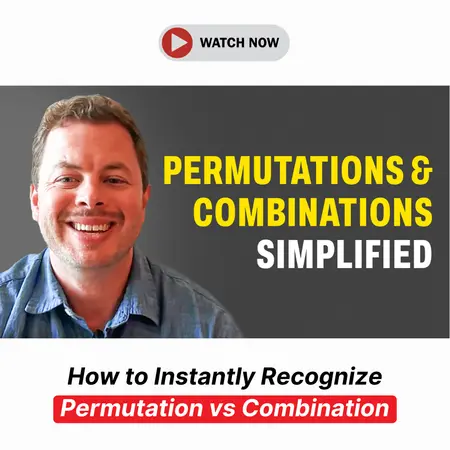Events & Promotions
|
|

GMAT Club Daily Prep
Thank you for using the timer - this advanced tool can estimate your performance and suggest more practice questions. We have subscribed you to Daily Prep Questions via email.
Customized
for You
Track
Your Progress
Practice
Pays
Not interested in getting valuable practice questions and articles delivered to your email? No problem, unsubscribe here.
- Nov 20
07:30 AM PST
-08:30 AM PST
Learn what truly sets the UC Riverside MBA apart and how it helps in your professional growth - Nov 22
11:00 AM IST
-01:00 PM IST
Do RC/MSR passages scare you? e-GMAT is conducting a masterclass to help you learn – Learn effective reading strategies Tackle difficult RC & MSR with confidence Excel in timed test environment - Nov 23
11:00 AM IST
-01:00 PM IST
Attend this free GMAT Algebra Webinar and learn how to master the most challenging Inequalities and Absolute Value problems with ease. - Nov 25
10:00 AM EST
-11:00 AM EST
Prefer video-based learning? The Target Test Prep OnDemand course is a one-of-a-kind video masterclass featuring 400 hours of lecture-style teaching by Scott Woodbury-Stewart, founder of Target Test Prep and one of the most accomplished GMAT instructors.
Kudos
Bookmarks
E
Be sure to select an answer first to save it in the Error Log before revealing the correct answer (OA)!
Difficulty:
 55%
(hard)
55%
(hard)
Question Stats:
63% (02:02) correct 37%
(01:48)
wrong
37%
(01:48)
wrong  based on 3253
sessions
based on 3253
sessions
History
Date
Time
Result
Not Attempted Yet
Leo can buy a certain computer for \(p_1\) dollars in State A, where the sales tax is \(t_1\) percent, or he can buy the same computer for \(p_2\) dollars in State B, where the sales tax is \(t_2\) percent. Is the total cost of the computer greater in State A than in State B?
(1) \(t_1 > t_2\)
(2) \(p_1t_1 > p_2t_2\)
(1) \(t_1 > t_2\)
(2) \(p_1t_1 > p_2t_2\)
Kudos
Bookmarks
Orange08
You can solve this question algebraically, but number plugging is easier here.
Total cost = p*(1 + t/100).
(1) \(t_1>t_2\)
No information about the prices. Not sufficient.
(2) \(p_1*t_1>p_2*t_2\)
The dollar amount of tax is higher in A than in B. But if \(t_1 > 0%\) and \(t_2 = 0%\), then this holds for any positive \(p_1\) and \(p_2\). Still, this does not guarantee which total cost is higher. Not sufficient.
(1)+(2) Again, if \(t_1 = 10% > t_2 = 0%\) (statement 1), then \(p_1 * t_1 > p_2 * t_2 = 0\) (statement 2). But even with both statements, we cannot establish the relationship between the total costs in State A and State B. For example, if \(p_1 = p_2\), the total cost in A would be higher than in B, since B’s cost would be just \(p_2\) (as \(t_2 = 0%\)) and A’s cost would be \(p_1 * 1.1 = p_2 * 1.1\). However, if \(p_1 = 1\) and \(p_2 = 100\), the total cost in A would be lower than in B, since B’s cost would be \(p_2 = 100\) and A’s cost would be \(p_1 * 1.1 = 1.1\). Not sufficient.
Answer: E.
Kudos
Bookmarks
i always find it better to replace all the t1, p1, blah blah with easy-on-the-eyes variables
e.g. replace p1,p2,t1,t2 with a,b,c,d respectively
Question is total price greater in State A --> is ac+a > bd+b
--> a(c+1) > b(d+1) ?
-->
e.g. replace p1,p2,t1,t2 with a,b,c,d respectively
Question is total price greater in State A --> is ac+a > bd+b
--> a(c+1) > b(d+1) ?
Quote:
we don't know anything about a and b --> insufficient
Quote:
all we know is that ac > bd ...again, we don't know anything about a,b,c,d individually--> insufficient
Quote:
again, we don't have any info about a and b --> Both statements together are also insufficient
-->












